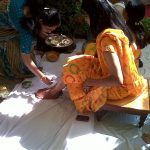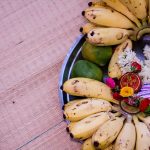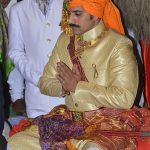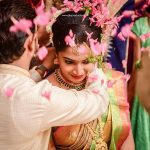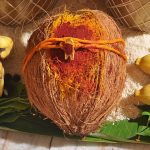A Gujarati wedding is the celebration of the marriage of the bride and groom, complete with Gujarati pre wedding rituals as well as Gujarati wedding rituals. The traditional customs hold deep meaning and significance. Traditionally, the families of eligible young men and women look for a suitable match for their son/daughter within their community. Occasionally, professional matchmakers also help match couples. This article explains the Gujarati wedding rituals step by step so that you can also know what goes into the customary Gujrati wedding.
Gujarati Pre Wedding Rituals
Chandoo Matli: The families of the prospective bride and groom negotiate and discuss the match. When both sides decide to go ahead with the match, the bride’s father and three male relatives visit the groom’s house carrying a Matli or steel container filled with sweets. They apply a red dot or Chandoo on the groom’s forehead and gift him the Matli and other gifts also. This announces the acceptance of the match.
Gol Dhana or Sagaai: This is the official engagement where traditionally coriander seeds (Dhana) with Jaggery (Gol) are given to the guests. The bride’s family visits the groom’s house with gifts. In modern times, the couple exchanges rings.
Ganesh Maatli or Ganesha Sthapan: The worship of Lord Ganesh is important at the start of any auspicious event. Both the bride’s family and the groom’s family each perform this pooja.
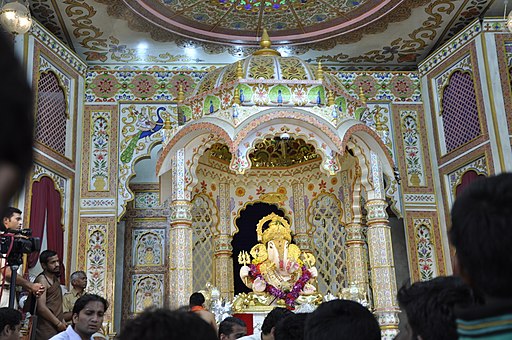
Mehendi: The bride’s family holds a Mehendi function where the hands and also feet of the bride are decorated with Henna designs. The guests sing, dance and make merry.
Mandap Mahurat: The rituals in Gujarati wedding take place in a four-pillared Mandap or canopy. At an auspicious time, the parents of the bride and the groom seek Mother Earth’s blessings to dig and erect a Mandap.
Griha Shanti: This pooja seeks the blessings of the nine planets for the upcoming marriage. This is a must in every Gujarati marriage.
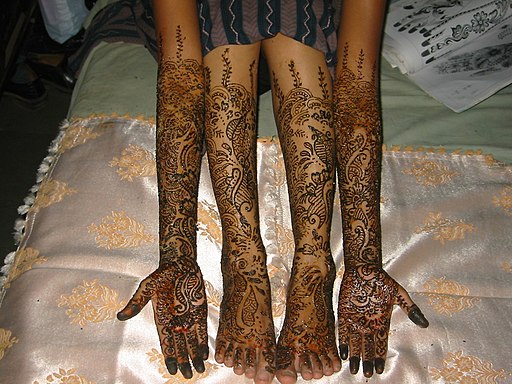
Haldi and Sangeet
Pithi: The Pithi ceremony is similar to the Haldi ceremony, which is a custom in many parts of India. Freinds and family apply a paste of Haldi, sandalwood powder, rosewater and perfume to the bride in her home and the groom in his home. The paste is auspicious and also a beauty enhancer that helps the couple look their best at the wedding.
Sanji or Sangeet Sandhya: The Sangeet is a pre-wedding celebration of the marriage. There is song and dance. Friends and family gather at the bride’s and groom’s homes respectively to celebrate the upcoming nuptials. The guests perform the Garbha dance and sing traditional folk songs.
Mameru or Mosaalu: The bride’s maternal uncle visits her and gives her gifts of clothes as well as jewellery.
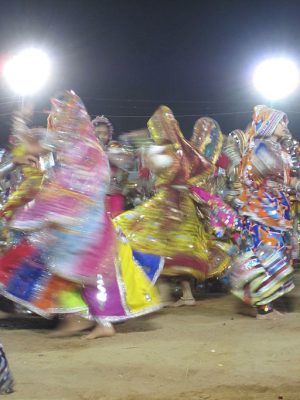
Gujarati Wedding Rituals Step By Step
Mangal Vadya: Musicians play the Shehnai and also the Dhol to start the day.
Varghodo: The groom and his entourage travel to the bride’s place in a procession or Baraat.
Swagatam: The bride’s parents and family greet the groom and his family when they arrive. The bride’s mother welcomes him into the family by placing a Tilak on his forehead. The groom is led to the wedding Mandap.
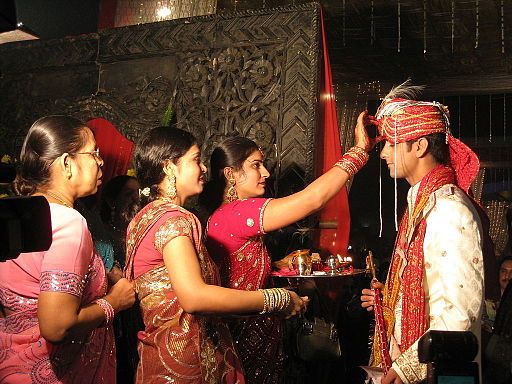
Ganesh Puja: Lord Ganesh is worshipped before the rest of the Gujarati Hindu wedding ceremony begins.
Kanyaa Daan: The bride covers her hands with turmeric powder. The father or uncle of the bride symbolically gives her in marriage to the groom.
Madhuparka: The bride’s parents wash the groom’s feet. They offer him a drink of Panchamrut which is a mixture of milk, yoghurt, ghee, honey, and sugar.
Wedding Mandap
Vivaaha: The bride knots the bride’s and groom’s garments together symbolising their union. The couple exchanges garlands and rings. The sacred fire is lit. The couple offers Samagri or a sacred mixture to the flames together.
Mangal Phera: The groom holds the hands of the bride and they walk around the fire four times. The priest recites prayers.
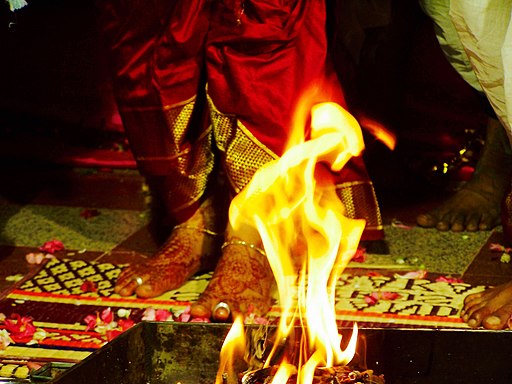
Saptapadi: The couple takes seven steps around the fire signifying their seven vows as listed:
- Nourish each other
- Grow together in strength
- Preserve their wealth
- Share joys and sorrows
- Care for their children
- Be together forever
- Remain friends for life
Mangal Sutra Dharana: The groom then ties a thread with the marks of Lord Vishnu or Shiva on the neck of the bride.
Suhaag or Sindoor Daan: the groom applies Sindoor to the bride’s forehead as a mark of her marriage.
Aashirvaad: The groom’s parents bless the bride and offer her clothes as well as flowers. The people present shower the couple with flower petals.
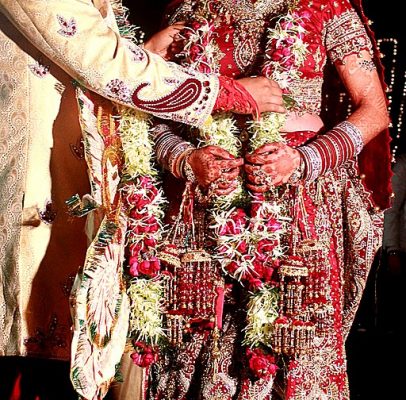
Gujarati Post Wedding Rituals
Vidaai: The couple takes the blessings of the bride’s parents and elders present. After the wedding, the bride bids farewell to her parents, relatives and friends. This is a very emotional time.
Ghar Nu Laxmi: The bride is seen as the Goddess Lakshmi who is entering the groom’s home. She is welcomed as such. Her mother-in-law places a vessel filled with rice at the entrance of the house and the bride then spills the rice by pushing it with her right foot as she enters. It symbolises the wealth that she brings.
Aeki Beki: The couple plays a game called Aeki Beki. A tray of water filled with a red liquid conceals a few coins. A ring is also placed in the tray. The couple then tries to find the ring seven times. The one who finds the ring four times will be the ruler of the household. The couple offers prayers.
Wedding Reception: In modern times, a grand wedding reception is usually held for the friends and families of the couple. The guests greet the couple and also shower them with gifts. Music is played, and a wedding feast is served. If the bride and groom are from very distant places, they may hold a wedding reception at the bride’s hometown and another at the groom’s.




